Coffee culture in different countries-understand the differences of coffee in different countries
Coffee culture in different countries
French coffee culture
It was once said that France drank less coffee because of a lack of coffee, and there were more nappers on the day. It may seem awkward, but the French are addicted to coffee. During the outbreak of the "sea war" in 1991, France was also one of the countries in the world. Some ordinary people in the country were worried about the supply of daily necessities and went to the super-market to buy goods. This connection has also changed. When the guests were greeted with "lack of goods", they found that what they got the most was coffee and sugar. At one point, it became a joke of the moment. It seems that the French drink coffee not in terms of taste, but in the environment and environment. Most of them do not "drink" at all, but they have to cook it outside, even if a small cup of coffee is cooked at home. They did not drink in a hurry, but slowly, enjoy the food, watch and talk about it, and drink it for most of the day. The French have become such a coffee drinker, and what they don't think of themselves is an elegant taste, a romantic feeling, and a sense of enjoyment of life. It can be said that this is a traditional coffee culture. Because of this, the places where French people rest and drink coffee can be said to be all over the streets, along the roadsides, on the banks of the river, on the fishing boats, and even on the tower of Efei. While the form, style and size are not limited to one style, there are coffee shops, coffee shops, coffee shops and rooms. The most romantic and romantic ones are the open-air cafes, which are almost a reflection of the life of the French people. It is strange that the French who pay attention to taste have a traditional law, and it may be better to buy a coffee shop in the Saiwan River than to buy a religious one. In an authentic coffee shop, regular customers are not only easy to change their coffee bars, but also fixed when they come to the coffee shop and where they sit on the coffee table. This kind of hospitality is also reflected in the indefatigable host. Without greeting, the old waiter, who is familiar with his frequent customers' temperament and hobby, will bring his favorite kind of coffee, with a special heart, and even buy his favorite newspapers. Needless to say, these are naturally accepted in an authentic coffee shop.
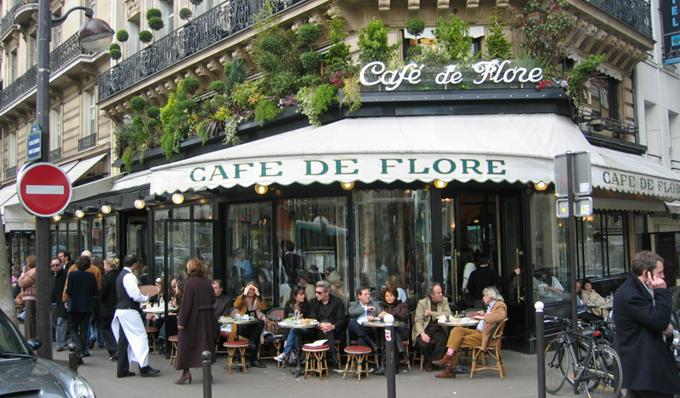
Dali coffee culture
When it comes to Italy, you have to be careful about one thing: one is a man; the other is coffee. In Italy, coffee is the same as men, so Dali has a famous saying: men should be like good coffee, both strong and affectionate! Italian coffee, called Espresso in English, has been widely known throughout the country in recent years to people who love good coffee. This kind of black coffee, which is fragrant and fragrant, is covered with gold foam, and the demons who have escaped like thick coffee often fall into indescribable charm and forget about it. The characteristic of Italian coffee is that it is a fast word in its English name. It can be made no more than ten seconds fast, and it can also be drunk quickly, because it has only three mouthfuls. Generally speaking, the first thing that Greeks do when they get up is to make a cup of coffee. No matter whether men or women drink it from morning till night, you can see a small coffee shop called BAR on the street. You can see a cup of coffee of about 400 lira, worth more than NT $10, for people to stand in one cup. On average, Italians drink 20 cups of coffee a day. Coffee beans made from Italian coffee are the most fried beans in the world. This is in line with the special function of Italian coffee coffee to extract coffee in an instant. Since the weight of a cup of Italian coffee is only 50cc, and the amount of coffee beans is only six to eight grams, this kind of coffee that looks very light is not at all soothing to the stomach, and it even helps digestion. There is also a way to drink Italian coffee with milk, called Cappuccino, which uses steam above 130 degrees Celsius to first foam the milk and then float on the black coffee. The sweet new milk is adorable in white, and the charming Espresso devil turns into a wonderful angel under it!

American coffee culture
When Americans drink coffee, it is like having a game of indulgence without rules, and there are a hundred taboos. People in the United States disdain the kinds of coffee they buy when they buy coffee in Asia. Americans drink coffee freely, and coffee goes deep into their lives at the same time in order to separate them, so much so that it is not a life without coffee. It was said that the Apollo 13 spacecraft, which launched a man to the moon for the first time, had a life-and-death failure during the voyage, and the words that the ground crew comforted the three astronauts were: come on! The fragrant coffee is waiting for you to come. Whether at home, in the office, in public, or on the road, Americans can't stay away from coffee for almost 24 hours a day. This has consumed 1/3 of the world's coffee production, making it the country with the largest coffee consumption in the world. Generally speaking, life in the United States is busier and more enjoyable, unlike people in Europe and China who enjoy life in a leisurely mood. It shows that drinking coffee is usually a lot of hot coffee. From morning to night, because there is too much water and less coffee (10 grams of coffee per cup of water versus 100 CC of water), the taste is particularly weak, so many people criticize American coffee for drinking it. As a matter of fact, in all parts of the United States, coffee lovers can still taste their favorite coffee taste as long as they pay more attention. If American coffee is classified as light, the coast of the United States drinks more heavily than the west coast, and the south drinks less than the north. As far as the nation is concerned, southern and Latino immigrants are more fond of strong coffee than British, German and northern immigrants. In addition, the United States is certainly the largest exporter of instant coffee, but not many people in the United States drink instant coffee. In recent years, they have paid more and more attention to the healthy results of eating. Caffeine consumption has increased in the market, and coffee consumption without sugar is becoming more and more common.
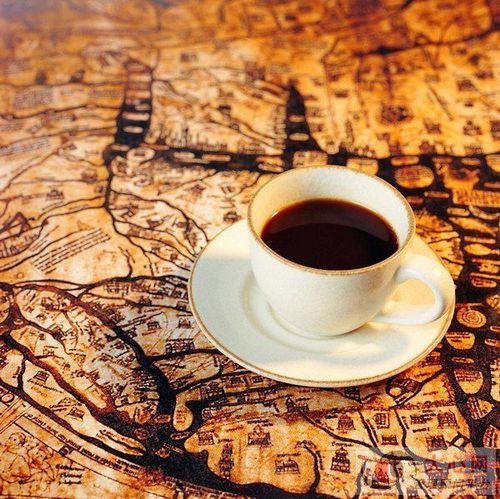
Turkish coffee culture
Coffee in ancient China is like a myth in 1001 nights. It is a thousand-faced girl with a mask. It can not only help you get close to God, but also serve as a clear spring for washing. When it comes to coffee, we have to mention Turkish coffee because it is said to have originated from Muslim or Christian sites, and its origins are all in the mysterious mountains of Chungli. After the 13th to 15th centuries, the role of Muslim religious circles was banned for 300 years. Coffee was officially introduced into Turkey in the 16th century, began to be commercialized, and quickly spread to the continent. This popular use of coffee in Greece, Malaysia, Central Africa, and North Africa, commonly referred to as Turkish coffee or Arabica coffee, still retains the mystery of the early religious dialect. The traditional practice of Turkish coffee is to grind the black beans into flour, put the sugar and cold water in a coffee brewer like a deep spoon, boil slowly over low heat, mix and add water, and about 20 minutes later, a small cup of 50cc fragrant and delicious coffee is finished. Since it is not too much for people to drink coffee, this cup of coffee, which is as thick as tall, is poured into the cup, with not only sticky foam on the surface, but also dregs at the bottom of the cup. In Chungli, being invited to another house for coffee represents that the host is in a hurry. Is the silk leg smooth? In addition to the mellow aroma of the coffee, you can't drink water even if you drink it badly, because it implies that the coffee doesn't taste good. Arabs drink coffee slowly, and they even have a set of sophisticated coffee ways, just like the Chinese tea ceremony, when drinking coffee, they not only burn incense, but also sprinkle spices and fragrance, and a dazzling array of coffee utensils, even more filled with the feeling of the sky and night. A cup of Chinese coffee with cloves, cardamom and cinnamon is fragrant, and the strange Arabs love it: it smells like musk.
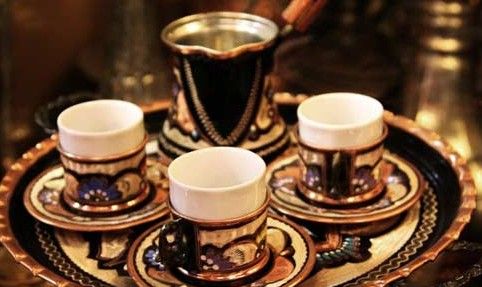
Ye coffee culture
Coffee is a kind of food that people are proud of. Many people even talk about it with sound and coffee, and call it "love three times", but they can also talk about people's relationship with coffee. Some people say that it is also a "five-step coffee", or it may be a big mistake, but it is true that the amount of coffee is not too small. From the coffee kiosks where people stand around the corner and the coffee shops where students gather near the university, there are at least ten coffee shops near the courtyard and the Imperial City, some of which open at 6: 30 in the morning and do not close until 2: 00 in the morning. Therefore, it is not too much to say that the space of the "capital of sound" is full of the rhythm of sound and the fragrance of coffee. The history of coffee drinking can be traced back to the 17th century. At that time, there was a lot of coffee in the large and small cities of Ethiopia, and coffee had become an indispensable part of people's lives. But in Asia, people still don't know what it is. In 1683, the second Turkish offensive was successful, and Emperor Takesto II had a military alliance, and the Turkish army crushed the Turkish offensive. The fleeing Turkish army bought a large number of weapons, weapons and hundreds of large pockets of mysterious brown beans on the market around the city, and people did not know what to do with these beans. Coincidentally, a Polish secret agent who had entered the army bought the black sauce made from this roasted adzuki bean in Constantinople, and the Turks called it "Kahve", which is now coffee. As a reward, the Polish man got all the coffee he bought on the market and opened the first coffee shop in history. To this day, many cafes still claim to be the first coffee shop opened by Polish people in order to attract customers. However, at the beginning, the coffee shop business was not good, and people still preferred to drink tea. Later, the businessman changed the recipe and added milk to the coffee, which worked surprisingly well and went on sale in the 1700s and 1980s. People call it "Melange". To this day, there are many kinds of coffee, but it is still the most popular dish.
Drinking coffee has become a part of life in Taiwan. In a leisurely atmosphere, people only need to pay for a cup of coffee, they can watch TV in a coffee club, play chess, watch TV, buy (usually provide reports from many countries), or watch TV in an inconspicuous corner. Some coffee shops have their own kind of customers-- the state, writers or politicians-- and most coffee shops are all kinds of customers. The most famous coffee shop in Taiya is the central coffee shop located in the downtown area. Before the first World Congress, this place has always been a gathering place for famous people, writers, writers, musicians, and diplomats. Some people say that this place is famous for many songs, manuscripts, and short stories, which may be a bit awkward, but Mozart, Guethoven, Schubert, and the Stroux and son of the Dance Dynasty are all regular guests here. Today's central coffee shop business is booming, but no matter how delicious the noodles are, guests can stay as long as they want. this is a tradition that will remain unchanged for a century. There are also many well-known coffee bars in Singapore, and he always has a close relationship with past or present celebrities. People like to tell people, such as Ju Jiazhen, which connoisseurs and writers often get together in which coffee shop, and which politicians like to meet with the writers in which coffee shop. There are many kinds of coffee, from black coffee to all kinds of coffee with milk, each has its own characteristics, suits different people's tastes, and each has its own name. Therefore, if you simply ask for a cup of coffee, the waiter will be at a loss because there are at least more than 40 kinds of coffee. If you don't know much about coffee, and you want to enjoy the special atmosphere of coffee, then like the "Melange" we mentioned earlier, this kind of milky coffee is completely stylish and has no aftertaste. No matter what kind of coffee you want, you will get a glass of water at the same time-for whatever reason, because the water is so delicious. However, if the waiter sends the guest a second glass of water, it indicates that "you have stayed here too long."
People also like sweets, and they like to order a cup of coffee and add a nice dessert at the same time. Gugelhupf is also a lot sweeter, but people like it best when they drink coffee, which is a special hollow omelet. Coffee shops equipped with newspaper, magazine and magazine providers are one of the major cultural features of coffee shops, which also have historical origins. It is said that at a time when coffee bars are not accepted, many coffee makers have to avoid providing coffee bars to attract customers, because at that time the report is very expensive, and the price of a newspaper is much more expensive than that of a cup of coffee. Of course, this hospitality effect of newspapers no longer exists today, but this practice has been maintained and contributes to the cultural taste of coffee houses.
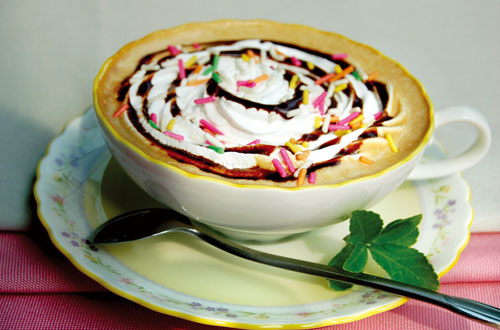
Japanese coffee culture
Coffee was first introduced to Japan when Nagasaki was born in the Yuan Dynasty. And the official acceptance was the beginning of the Meiji era. Now let's take a look at the coffee history of Japan. At first, the taste was mellow. The Japanese coffee shop opened in two or three places, and the literature and art of coffee culture were in full bloom, while Japan was in the midst of the pro-Japanese policy of the Yangtze River era. At that time, the first ingredient coffee was introduced in Nagasaki's Dutch merchant facility (1641). However, those who can connect with foreigners are servants (officials), businessmen and tourist girls. In 1776, two or three people knew the delicacy of coffee, which was recorded in the Book of honors in Japan. The "coffee" specially spread to symbolize foreign culture cannot be popularized at that time.
The Japanese drink coffee by the author of a crazy song in 1804. In the midst of Yamamura, the people of Shushan in Daejeon were invited to drink coffee on a hairy boat. The beans are fried black and pink, and they are used with white sugar and aftertaste. The smell and bitterness of the bitter taste cannot be matched. " Judging from the background that coffee is imported and imported and cannot be accepted, the certainty of the PRC policy has confirmed the Japanese's indifference to the taste of the new ingredients.
Hiroshi, who came to Japan in 1823, seems to like coffee. In the book "Jiang Xianshen Chronicle", he wrote that "when the Japanese deal with us, they like to drink coffee."
The real popularization began in the middle of the Meiji. The monthly rendezvous of Hiroshi Kitahara, Woodpecker Ishikawa, Kotaro Takamura, Haruo Sato, and Hiroshi Nagai, members of the magazine's article magazine "Aung", meet each month at the "Takeshi Nest" site in the town of Toshiku, Japan. In that shop, you can use authentic French cuisine and foreign wine, coffee is also authentic French deep-roasted coffee. The nest of a man is like a social place for literati.
From the Meiji era to the Taisho era, cultural sand like this gave birth to coffee shops, and Japan was also reluctant to enter the coffee culture. However, for ordinary people, it is still a kind of successful store shopping.
The coffee salad formed at that time was a social place for literati or literary youth, but at the same time, plain coffee shops were popular. In the heyday of the Taisho era, there were more than 20 stores in the country. Why is coffee salad so popular? Because a cup of coffee in a high-end western restaurant costs 15 yuan at that time, while imitating a coffee shop in Paris or a treaty, a cup of low-end coffee will be offered at the end of the day. Therefore, with 1/3 cubes, you can have authentic and fragrant Brazilian coffee. In the country's well-known coffee salad, the number of Japanese who have tasted delicious coffee is numbered. Coffee salad has left an indelible contribution to the melting of coffee.
In the Taisho era, the number of coffee lovers really increased a lot, and when they entered Showa, they were even more loved by Daiichi. The second World Coffee stopped buying coffee because it was a "national ingredient." In Japanese life, coffee suddenly disappears. Coffee is appreciated and loved by people as "messengers of peace".
At present, the situation in the coffee market in Japan is relatively fierce. Including tea shop and family coffee and instant coffee, family coffee and office coffee, all kinds of canned coffee, plus hospitality coffee, delicious coffee and so on. Especially in the Pingcheng era, the more authentic demand for coffee also increased.
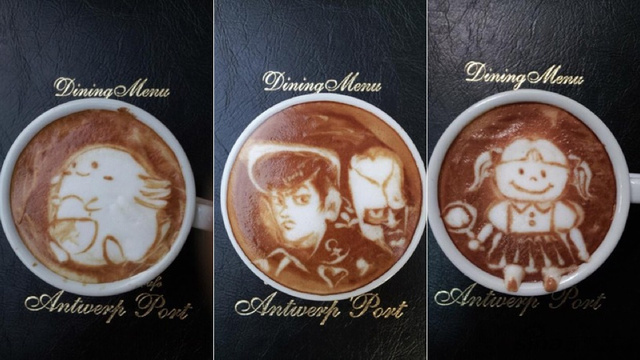
Source: Hong Kong Coffee Association
Important Notice :
前街咖啡 FrontStreet Coffee has moved to new addredd:
FrontStreet Coffee Address: 315,Donghua East Road,GuangZhou
Tel:020 38364473
- Prev
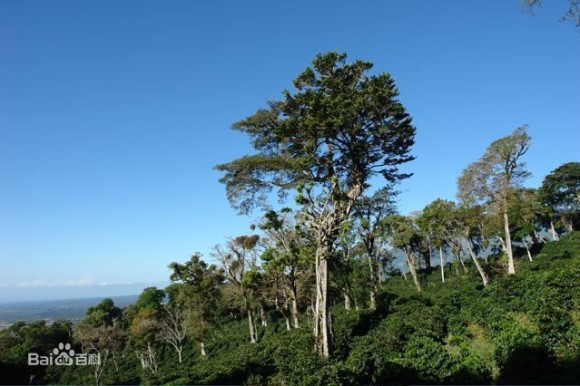
Brief introduction of individual coffee: coffee upstart, boutique bean king-Panama Rose Summer
Judging from the circulation prices in the past two years, this bean is indeed not cheap. Needless to say, the unique litchi flavor is still fresh in people's memory from the rose summer of the Jade Manor, which has the most contact with it. Low production and frequent awards are also part of the reason why prices continue to rise. The species of Geisha originated from the forests of Ethiopia in 1931.
- Next
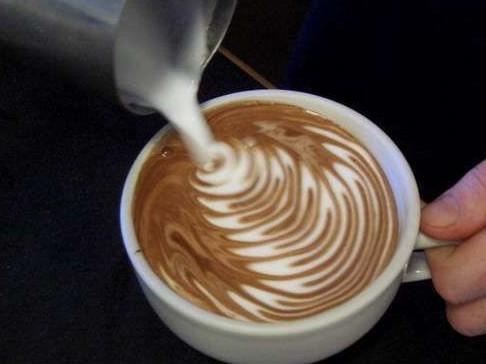
Explain in detail the various brewing methods of making a cup of coffee
The American Coffee Association invited Dr. Ernest Eral Lockhart to set up the Coffee Brewing Society, which formulated the standard for calculating the extraction rate and degree of coffee, and defined the "Golden Cup Standard Golden Cup" according to these two standards. after that, the three values of extraction rate, degree and ratio of brewing coffee were evolved into "brewed coffee quality control"
Related
- What is the meaning of lactic acid fermentation with coffee bean treatment?
- How to judge the state of foam by sound?
- How does the latte pull out the unicorn pattern? Come to get for a little trick to improve the flower pull!
- Will flower pulling affect the taste of the latte?
- Do you know the history of coffee?
- The difference between honey treatment and sun washing what is raisin honey treatment?
- What kind of milk can a novice use to make coffee foam to keep the foam longer? The correct method and skills of milking tutorial sharing
- Why do washed coffee beans taste sour? Flavor characteristics of washed Coffee
- Introduction to the skill of how to practice the size and height of water injection around the circle of hand-brewed coffee
- How do beginners practice coffee flower drawing from scratch?

